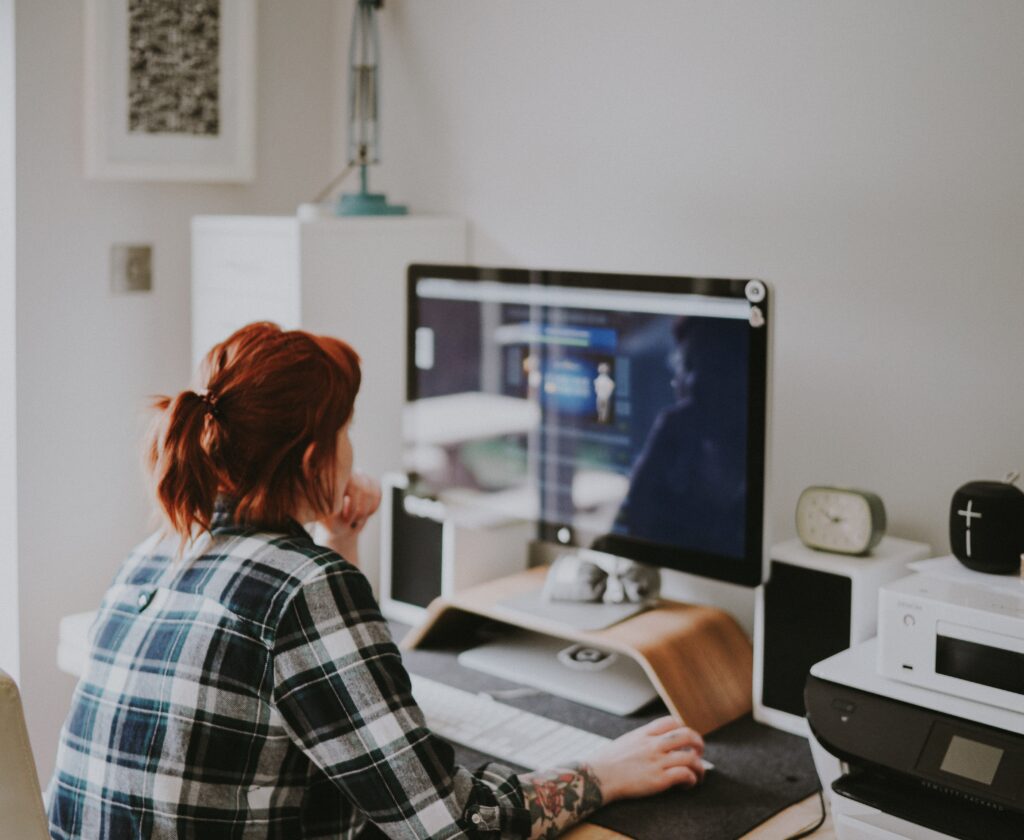
As technology advances, so does the way that we interact with it. Gone are the days of navigating a browser using choices from a menu – now, users can navigate through software and websites with simple gestures. Whether you’re swiping on your smartphone screen or conducting tasks with voice commands to an AI assistant, user interface devices allow us to explore more efficient ways to complete our work faster than ever before. From clicks to gestures, let’s delve into the future of user interface devices and how these innovations can help us be even more productive as computer users!
In today’s world, technology has become an integral part of our lives. With the rise of digitalization, user interface devices have gained immense popularity in the market. These devices act as intermediaries between human beings and technology, allowing us to interact with machines in a more intuitive and seamless manner. From touchscreens to voice assistants, the landscape of user interface devices is constantly evolving, giving us new and efficient ways to communicate with our devices. With the increasing demand for technology, user interface devices are only going to become more advanced and integral to our daily lives.
As technology evolves, so does the way we interact with it. User interface devices have come a long way, and now we have the option of using either clicks or gestures to navigate them. While clicks may seem more traditional, gestures offer a more intuitive and natural way to interact with technology. Swiping, pinching, and tapping have become commonplace on touch screens, allowing for a more immersive experience. However, this method of interaction also requires more effort from the user and may lead to accidental actions. Clicks, on the other hand, offer more precision and control, but at the cost of being less intuitive. Ultimately, the choice between clicks and gestures depends on the user’s preferences and the specific device and task at hand.

Technology has made incredible strides in recent years, and nothing exemplifies this better than the growing popularity of virtual assistants. These intelligent voice interaction systems have revolutionised user interfaces devices, allowing us to interact with our technology in ways that were once the stuff of science-fiction. With just a few words, we can now control our homes, search the internet, and even order our groceries. It’s no wonder that these wonderful devices are becoming increasingly popular among users. As our relationship with technology continues to evolve, we can expect virtual assistants to play an increasingly vital role in our daily lives. Who knows where this technology will take us next?
Wearable technology has revolutionised the way we live our lives. With a plethora of user interface devices available, we are constantly finding new and exciting ways to interact with technology. One such device that has skyrocketed in popularity is wireless earbuds. These small yet powerful gadgets have freed us from the constraints of traditional headphones and have given us the freedom to experience music, podcasts and audiobooks without being tethered to our devices. However, the possibilities for wearable technology go far beyond just listening to audio. With advancements in technology, we are now able to explore new and exciting ways to enhance our lives through wearable devices. The future is bright for wearable technology and we can’t wait to see what new possibilities it will uncover.

In today’s age of constantly advancing technology, user experience is key in determining the success of any product or service. Augmented Reality (AR) is a game-changing technology that presents endless possibilities in enhancing user experiences. AR involves overlaying digital information on top of the real world, creating a seamless integration between the virtual and physical worlds. With the aid of user interface devices such as smartphones and wearables, AR technology is able to provide an immersive and interactive experience for users. By incorporating AR into products and services, businesses are able to offer a unique and unforgettable experience for their customers, setting themselves apart from competitors.
Technology continues to evolve at an unparalleled pace, which has forced user interface design to evolve as well. AI, or artificial intelligence, is one of the most significant advancements in technology, and it has already had a substantial impact on user interface design. With AI, user interface devices can constantly learn from user behaviour and provide a more intuitive and personalised experience. This has led to a shift from traditional menus and buttons to more natural and conversational interactions that mimic human conversation. In essence, AI is transforming how humans interact with technology, and designers must keep up with this technological revolution to create interfaces that are both streamlined and intuitive. As AI technology gets more sophisticated, it will continue to revolutionise how we interact with technology, and ultimately improve our lives.
We have covered the current landscape of user interface devices and explored the advantages and disadvantages of clicks and gestures, virtual assistants, wearable technology, augmented reality, and AI in user interface design. User interfaces are constantly evolving to provide a better experience for customers, with an array of tools to choose from. In this way, businesses can be sure to reach wider audiences, by providing their users with a variety of ways to interact with their products or services. As UX designers continue to explore new possibilities for interaction design, consumers will benefit from faster, simpler and more intuitive applications that can adapt to different user needs. As technology advances and the demand for seamless experiences increases, innovation will continue to fuel conversations surrounding user interface designs.
We are eager to see what the future holds for these devices as we experience how far technological development has gone already! Interested to learn more about user interface devices? Contact us today – we’re always happy to chat!